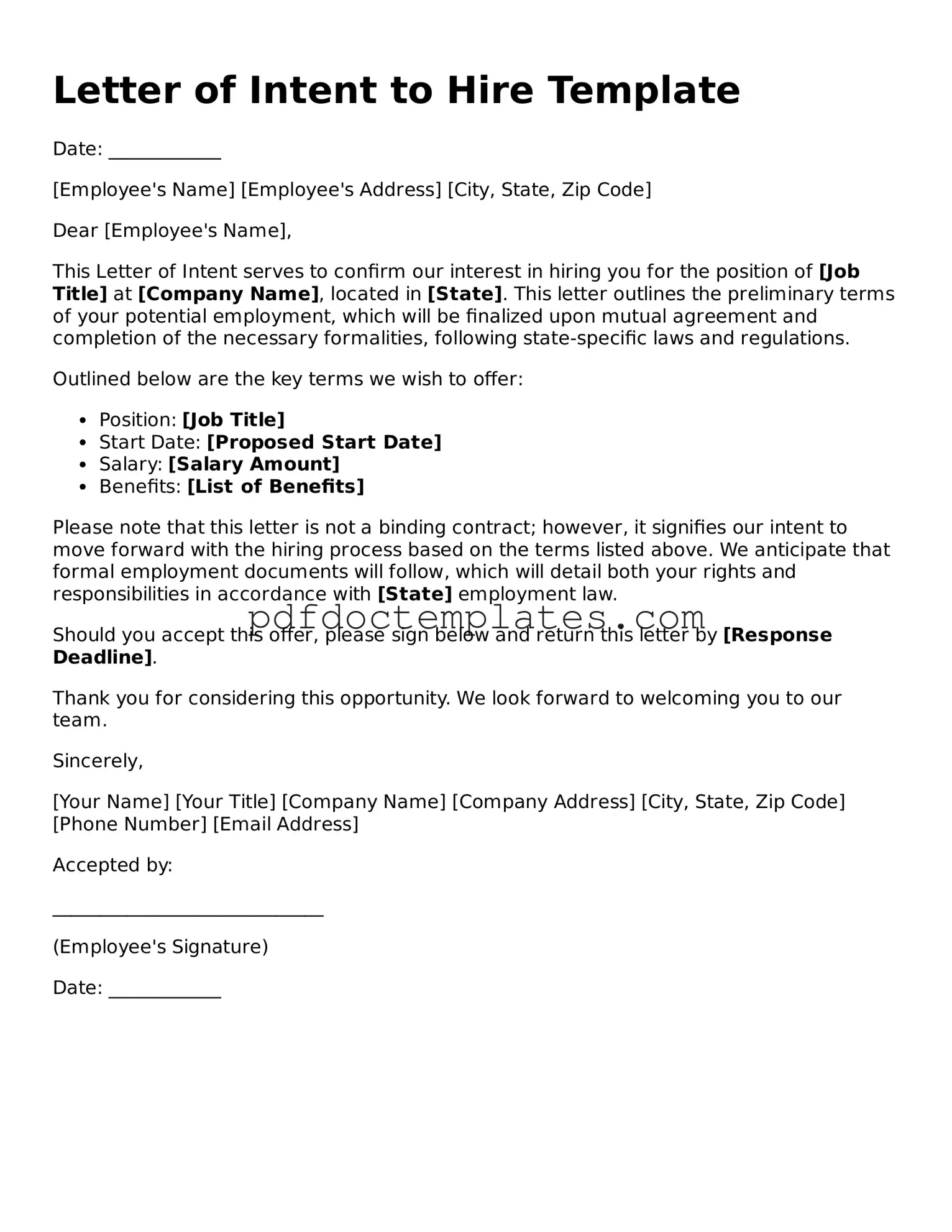Letter of Intent to Hire Template
Date: ____________
[Employee's Name]
[Employee's Address]
[City, State, Zip Code]
Dear [Employee's Name],
This Letter of Intent serves to confirm our interest in hiring you for the position of [Job Title] at [Company Name], located in [State]. This letter outlines the preliminary terms of your potential employment, which will be finalized upon mutual agreement and completion of the necessary formalities, following state-specific laws and regulations.
Outlined below are the key terms we wish to offer:
- Position: [Job Title]
- Start Date: [Proposed Start Date]
- Salary: [Salary Amount]
- Benefits: [List of Benefits]
Please note that this letter is not a binding contract; however, it signifies our intent to move forward with the hiring process based on the terms listed above. We anticipate that formal employment documents will follow, which will detail both your rights and responsibilities in accordance with [State] employment law.
Should you accept this offer, please sign below and return this letter by [Response Deadline].
Thank you for considering this opportunity. We look forward to welcoming you to our team.
Sincerely,
[Your Name]
[Your Title]
[Company Name]
[Company Address]
[City, State, Zip Code]
[Phone Number]
[Email Address]
Accepted by:
_____________________________
(Employee's Signature)
Date: ____________
